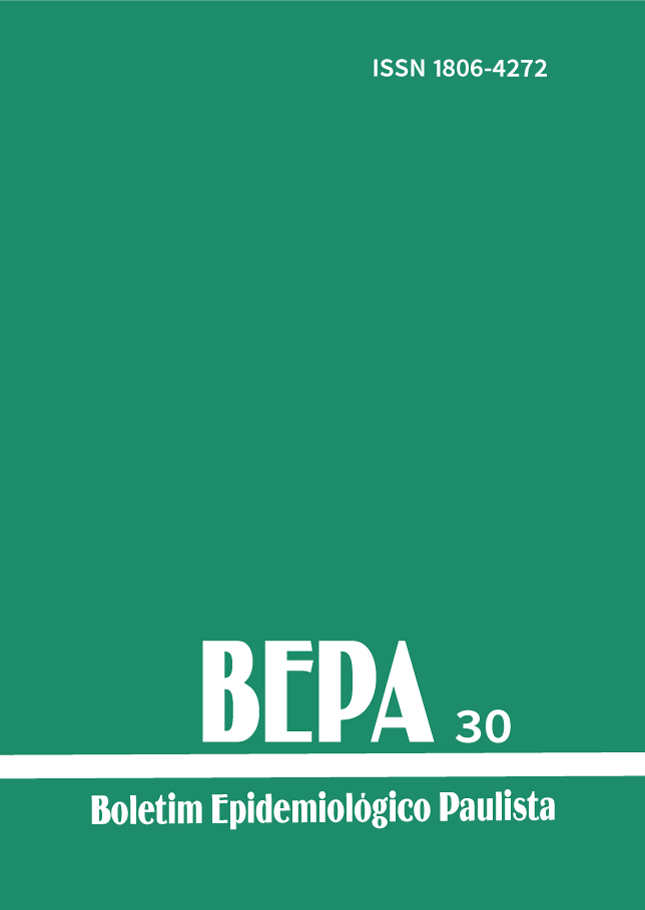Abstract
The objective of this study was to assess vision and hearing health status of adults and the elderly who participated of health groups in Health Regional Administration –2 (ARS - 2) comprising the regions Butantã, Lapa, Pinheiros in the city of São Paulo. Integrated activities of the Elderly, Ocular, Hearing and Disable Health Programs were developed with general information about promotion and protection of vision, hearing and health communication. As methods to perform this study, a form was answered, questioning about general health, and vision and hearing impairments. They were submitted to visual acuity measurement (V.A.), meatoscopy examination and were referred to ophthalmic and otorrinolaringology examination. Results showed that a total of 214 people were evaluated, aged 50 or older, belonging to the health groups previously described. Of these, 75,2% related that vision had little or no impairing impact in their daily activities. The AV of the best eye showed that 77,1% had vision 1,0 to 0,7 and 1,9% had vision < 0,3. Among the persons with AV £ 0,5 in one of the eyes, 27,0% were sent to an ophthalmic exam. Among people who were submitted to hearing health tests, Within the hearing health, 52,8% referred not to have difficulty in listening to the TV, 31,8% complained of buzzing noise and 19,6% complained of discomfort with noise; 42,5% of these persons were forwarded to otorrinolaringological consultation. As conclusion, it was possible to see that the population under study, who participated in organized groups, would have greater access to health equipments, to information about self care and prevention of diseases, and, consequently, showed less visual and hearing problems. The importance of preventive work, as well as activities of promotion became evident, contributing to an increase in quality of life, preserving their functional capacities and making social interaction easier.
References
Veras, RP. País jovem com cabelos brancos: a saúde do idoso no Brasil. Rio de Janeiro: Relume Dumorá, UERJ; 1994.
Instituto Brasileiro de Geografia e Estatística (IBGE). Anuário Estatístico do Brasil: Estatísticas Populacionais e Grupos Populacionais Específicos. Rio de Janeiro: IBGE; 1994.
Veras RP, Alves MI. A população idosa no Brasil: considerações acerca do uso de indicadores de saúde. In: Minayo, M.C.S. org. Muitos Brasis saúde e população na década de 80. São Paulo: Hucitec- Abrasco; 1995. p. 321-37.
Dana MR, Tielsch J, Enger C, Joyce E, Santoli JM, Taylor HR. Visual impairment in a rural Appalachian community prevalence and causes. JAMA 1990; 264:2400-
Kara José N, Contreras F, Campos MA, Delgado AM, Mowery RL, Ellwein LB. Estudo populacional de triagem visual e intervenção cirúrgica para reduzir a cegueira por catarata em Campinas-Brasil e Chimbote-Peru. Arq Bras Oftalmol 1989; 52:91-6.
Thylefors B, Négrel AD, Pararajasegaram R, Dadzie KY. Global Data on Blindness. Bull World Health Organ 1995; 73:115-21.
Russo ICP. Uso de próteses auditivas em idosos portadores de presbiacusia: indicação, adaptação e efetividade [tese de doutorado]. São Paulo: Universidade Federal de São Paulo/Escola Paulista de Medicina; 1988.
Harries MLL et al. Hearing Aids – A case for review. J. Laryngology and Otoscopy 1989; 103:850- 52.
Rassi EPM. Indicadores de saúde em idosos: o papel da Unidade Básica de Saúde. Gerontologia 1994; 2 (2): 75-81.
Leibowitz HM, Krueger DE, Maunder LR, Milton RC, Kini MM, Kahn HÁ et al. The Framingham Eye Study Monograph. Survey Ophthalmol 1980; 24 (suppl.):1-610.
Wun YT, Lam CC, Shum WK. Impaired vision in the elderly: a preventable condition. Family Practice 1997; 14: 289-92.
Santos TMM & Russo ICP. A prática da audiologia clínica. São Paulo: Cortez Editora; 1988.
Russo ICP, Almeida K. O processo de reabilitação audiológica do deficiente auditivo idoso. In: Tópicos em Fonoaudiologia. São Paulo: Editora Lovise; 1995.
Marchesan IQ. Distúrbios da motricidade oral. In: Intervenção fonoaudiológica na terceira idade. São Paulo: Editora Revinter; 1998.
Organização Mundial da Saúde (OMS). Strategies for the prevention of blindness in National Programmes: a primary health care approach. Geneve: World Health Organization; 1984. 88p.

This work is licensed under a Creative Commons Attribution 4.0 International License.
Copyright (c) 2006 Wilma T. Miyake Morimoto, Norma Helen Medina, Adilson Nunes Guardado, Maria Helena Andrade Lima, Ana Maria Marcondes Pinto, Ione Maschietto Magnusson
